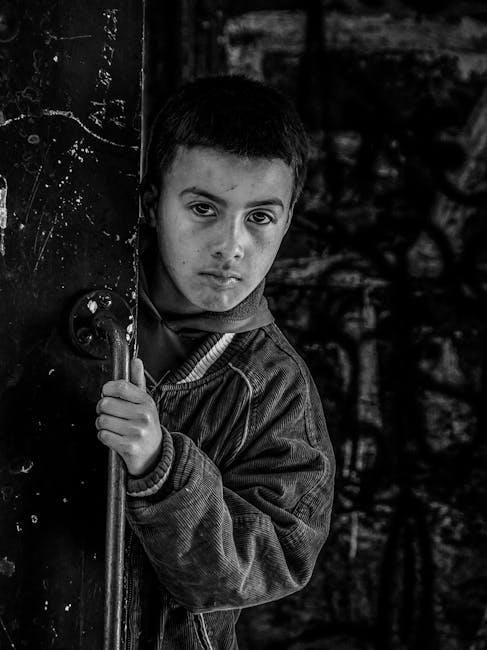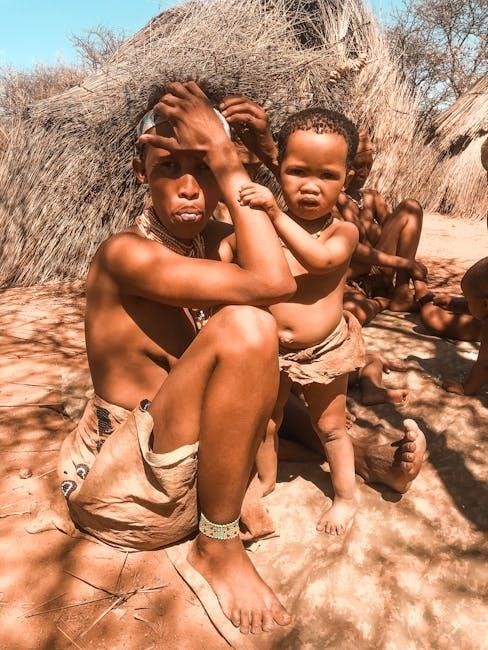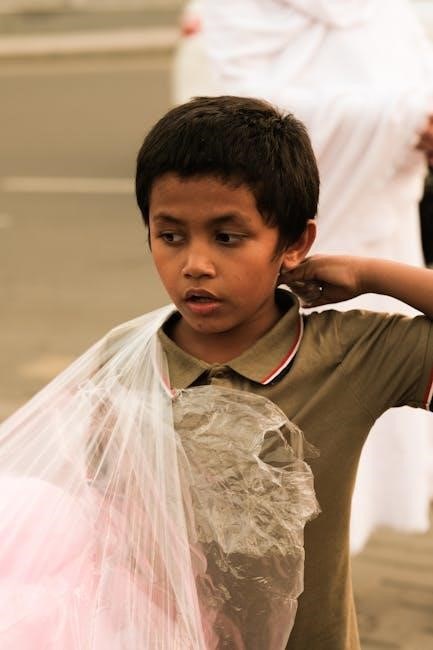effects of child marriage on society pdf

Child marriage, a widespread practice, profoundly impacts society. It perpetuates poverty cycles, hindering economic development. Girls are robbed of opportunities, limiting their contributions to society as future leaders.

Definition and Prevalence of Child Marriage
Child marriage is defined as a formal or informal union before the age of 18. Globally, millions of girls are married, especially in South Asia and sub-Saharan Africa, disrupting their education and childhood.
Global Statistics on Child Marriage
Globally, child marriage remains a prevalent issue, affecting millions of girls. Over 60 million marriages involve girls under 18, with approximately 31 million in South Asia, 14 million in sub-Saharan Africa, and 6.6 million in Latin America and the Caribbean. Each day, 25,000 girls are married. An estimated 100 million girls will be married. The practice disrupts education and increases vulnerability to violence and abuse. Child marriage is fueled by gender inequality, poverty, social norms, and insecurity. The COVID-19 pandemic has increased the risk. Interruptions in services have exacerbated this harmful practice across the world.
Human Rights Violations Associated with Child Marriage
Child marriage is a violation of human rights, denying children their childhood. It disrupts education, leading to violence, discrimination, and abuse. These violations impact women, their children, and society.
Violation of the Universal Declaration of Human Rights
The Universal Declaration of Human Rights (UDHR) explicitly states that child marriage is a blatant violation of Article 16(2). This article unequivocally asserts that marriage should only be entered into with the free and full consent of both intending spouses. Child marriage, by its very nature, negates this fundamental principle, as children lack the maturity and autonomy to provide genuine consent. Forced into unions before they are physically, emotionally, or mentally ready, these young individuals are deprived of their right to choose their own life partners. This denial of agency constitutes a grave infringement upon their inherent human dignity and freedom, undermining the very foundations of the UDHR.
Violation of the Convention on the Elimination of all Forms of Discrimination Against Women (CEDAW)
The Convention on the Elimination of All Forms of Discrimination Against Women (CEDAW), often hailed as the international bill of rights for women, unequivocally condemns child marriage as a form of discrimination. CEDAW asserts that women should possess the same rights as men to freely and fully consent to marriage. Child marriage blatantly contravenes this principle by denying girls the autonomy to make informed decisions about their lives. By forcing young girls into marriage, societies perpetuate gender inequality and undermine their fundamental human rights. CEDAW aims to eliminate discrimination against women in all spheres, including marriage and family relations, making the abolishment of child marriage a crucial step towards achieving gender equality globally.
Impact on Education and Economic Development
Child marriage hinders educational attainment and literacy, increasing the likelihood of living in poverty. It deprives girls of economic independence, perpetuating gender gaps in educational outcomes and limiting economic growth.
Link between Child Marriage and Reduced Educational Attainment
Child marriage severely curtails educational opportunities for girls, often marking the end of their schooling. Once married, girls face immense pressure to fulfill domestic responsibilities and bear children, effectively halting their academic pursuits. This lack of education limits their future prospects, trapping them in cycles of poverty and dependence. Denied the chance to develop their skills and knowledge, child brides are less equipped to contribute to the workforce and participate fully in society. The consequence is a significant loss of potential, both for the individual and for the broader community, hindering overall progress and development.
Economic Consequences for Child Brides and Society
Child marriage has devastating economic consequences for both the child brides themselves and the broader society. Girls who marry young are often deprived of the opportunity to continue their education, leading to lifelong economic disadvantages. They struggle to access employment and financial independence, perpetuating a cycle of poverty. This lack of economic empowerment limits their ability to contribute to household income and participate in the formal economy. The consequence is a significant loss of potential human capital, hindering economic growth and development. Child marriage also places a burden on social welfare systems, further straining resources and impeding progress.

Health Consequences of Child Marriage
Child marriage leads to severe health consequences, including increased maternal mortality and morbidity. Early pregnancies pose significant risks, and adolescent girls face higher vulnerability to HIV and other health issues.
Increased Risk of Maternal Mortality and Morbidity
Child marriage significantly elevates the risk of maternal mortality and morbidity among young brides. Adolescent pregnancies, common in child marriages, are fraught with complications endangering both mother and child. Teenage birth rates are highest where child marriage prevails. The risk of maternal mortality is highest for girls under 15. Complications during pregnancy and childbirth are leading causes of death among adolescent girls in developing countries. Survivors face long-term debilitating health complications, such as obstetric fistula, compromising their ability to work or return to school and further burdening under-resourced healthcare systems. This underscores the urgent need to address child marriage to safeguard girls’ health.
Vulnerability to HIV and Other Health Issues
Child brides face heightened vulnerability to HIV and various other health issues, exacerbating the detrimental consequences of early marriage. Adolescent girls are disproportionately affected by HIV. Child brides married to older men with multiple partners are more likely to contract HIV due to limited sexual and reproductive health information. They also lack the power to negotiate safe sex or refuse unwanted sexual advances. Partner violence further elevates the risk of HIV transmission. Tragically, AIDS is a leading cause of death among adults. Girls from child-headed households are also at a higher risk of early marriage, seeking it as a means of survival due to poverty.

Social and Cultural Impacts
Child marriage significantly impacts societal structures, reinforcing gender inequality. Child brides often face lower social status, hindering their access to education, employment, and entrepreneurial opportunities, thus impacting communities.
Reinforcement of Gender Inequality
Child marriage is a significant driver of gender inequality, disproportionately affecting girls. It denies them the chance to pursue education, limiting their future opportunities for employment and financial independence. This early transition into adulthood often leads to a lower status in society, perpetuating traditional gender roles. Child brides are frequently excluded from decision-making processes and lack the power to negotiate safe sex or refuse unwanted advances, increasing their vulnerability to violence and abuse. The practice undermines girls’ rights and reinforces harmful social norms that prioritize marriage over their well-being and empowerment, ultimately hindering progress towards gender equality and societal development.
Increased Risk of Domestic Violence
Child marriage significantly elevates the risk of domestic violence for young brides. Due to power imbalances inherent in these unions, girls often lack the agency to negotiate or refuse unwanted sexual advances, increasing their vulnerability to abuse. The age disparity and unequal status within the marriage contribute to a higher likelihood of physical, emotional, and sexual violence. Child brides are also often isolated from their families and support networks, making it difficult to seek help or escape abusive situations. The lack of education and economic independence further restricts their options and increases their dependence on their spouses, perpetuating the cycle of violence and abuse.
The Role of Poverty and Social Norms
Poverty and entrenched social norms are key drivers of child marriage. Desperate economic circumstances can lead families to see child marriage as a financial solution or a means of survival.
Poverty as a Driver of Child Marriage
Poverty is a significant factor driving child marriage, particularly in developing countries with limited economic opportunities. Families facing financial hardship may view marrying off their daughters as a way to alleviate economic burdens. This is often seen as a survival strategy when families struggle to afford basic necessities such as food, shelter, and education. Child marriage can be perceived as a way to secure a dowry or reduce the number of family members to support. The lack of economic alternatives and the desperation caused by poverty can lead families to make decisions that compromise the well-being and future of their daughters, perpetuating a cycle of poverty and disempowerment, denying them the chance to realize their potential.
Impact of Social Norms and Traditions
Social norms and deeply ingrained traditions play a crucial role in perpetuating child marriage across various cultures. In some communities, marrying off young girls is considered a customary practice, often driven by beliefs about preserving family honor or ensuring a girl’s financial security. These traditions can be resistant to change, as they are often intertwined with cultural identity and religious interpretations. The pressure to conform to these norms can be immense, leaving families feeling compelled to marry off their daughters despite potential harms. Furthermore, gender inequality reinforces these norms, as girls are often seen as less valuable than boys, making them more vulnerable to child marriage. Addressing these harmful social norms requires comprehensive efforts to promote gender equality and challenge traditional beliefs.

Sustainable Development Goals and Child Marriage
Child marriage significantly hinders progress towards achieving the Sustainable Development Goals. Ending this practice is crucial for gender equality, reducing poverty, and ensuring quality education for all girls globally.
Child Marriage as a Barrier to Achieving SDGs
Child marriage poses a substantial obstacle to achieving the ambitious Sustainable Development Goals (SDGs). By depriving girls of education, economic opportunities, and health, it undermines progress across multiple goals. Specifically, it impedes SDG 1 (No Poverty) and SDG 2 (Zero Hunger) by limiting women’s economic contributions. Furthermore, child marriage obstructs SDG 3 (Good Health) due to increased maternal mortality risks. It also prevents SDG 4 (Quality Education) by ending girls’ schooling. Gender inequality, addressed by SDG 5, is reinforced through child marriage. Addressing child marriage is, therefore, essential for holistic and sustainable development globally, ensuring a brighter future for all.
SDGs Addressed by Ending Child Marriage
Ending child marriage advances several Sustainable Development Goals (SDGs), fostering global progress. SDG 1 (No Poverty) benefits as educated women reinvest earnings into families, breaking poverty cycles. SDG 2 (Zero Hunger) sees improvement with women’s role in sustainable agriculture. SDG 3 (Good Health) is bolstered by reducing maternal mortality and HIV risks among adolescent girls. Quality Education (SDG 4) is enhanced by allowing girls to continue their schooling and fulfill their potential. Gender Equality (SDG 5) is directly addressed by eliminating a practice rooted in discrimination. Climate Action (SDG 13) is indirectly supported through educated women’s smaller, healthier families and sustainable practices. Ending child marriage creates a ripple effect, driving comprehensive development.



Leave a Reply
You must be logged in to post a comment.